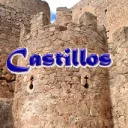• SENA, SIGENA, CHALAMERA, y VELILLA DEL CINCA
 Viaje a uno de los monasterios, del románico español, que los aconteceres de la guerra civil, y más de un grupo que lo destrozaron de forma irremediable, privándonos de los tesoros de nuestra historia. Y localidades, en el Camino de Santiago de Lérida a Fraga
Viaje a uno de los monasterios, del románico español, que los aconteceres de la guerra civil, y más de un grupo que lo destrozaron de forma irremediable, privándonos de los tesoros de nuestra historia. Y localidades, en el Camino de Santiago de Lérida a Fraga
Encontraras las siguientes visitas:
- SENA. Ayuntamiento, edificio renacentista de tres plantas del S. XVI. Casa de las Monjas, edificación antigua Casa Noguera, casa de labradores de estilo aragonés. Y la Iglesia de la Asunción, de estilo gótico aragonés
- VILLANUEVA DE SIGENA. El Real Monasterio de Santa María.- Fundado en 1188 por la reina Doña Sancha de Castilla, esposa del rey aragonés Alfonso II. Se inició su construcción a finales del siglo XII. El monasterio es una obra románica, con algunas partes transicionales al gótico. Consta de iglesia, claustro y dependencias, más el palacio prioral. Iglesia de El Salvador, Es un templo del gótico tardío originalmente y estuvo vinculada a las posesiones del Monasterio de Nuestra Señora de Sigena. Y el Museo Miguel Servet, el lugar de nacimiento del teólogo heterodoxo, científico, sabio aragonés y teólogo Miguel Servet (1511-1553).
- CHALAMERA. Ermita Santa María.- Construida entre los siglos XII y XIII, es un edificio románico con planta de cruz latina de una sola nave y ábside semicircular con bóveda de horno, propio del románico. Es muy interesante el cimborrio, con torreón octogonal exterior clásico de las construcciones templarías, situado sobre el crucero con cúpula de forma semiesférica apoyada sobre cuatro trompas.
- Y en VELILLA DEL CINCA. Ermita de San Valero.- Esta ermita románica del S. XIII realizada en piedra sillar, está directamente construida sobre un mausoleo romano. Ésta es una ermita de planta rectangular con dos portadas de arcos de medio punto con dovelas, óculo y espadaña, que posiblemente se construyó aprovechando los restos de un mausoleo romano con sus grandes sillares, y basas de columnas.
Puedes descargarte el PDF con información, planos, fotos y contactos.
Pulsar sobre la imagen con el botón derecho y guardar como…para descargar y llevar el archivo PDF en tu tablet o smartphone.
-
SENA, SIGENA, CHALAMERA, and VELILLA DEL CINCA
Trip to one of the monasteries, the Spanish Romanesque, that the events of the civil war, and more than one group that destroyed it irreparably, depriving us of the treasures of our history. And from the Ermita de Chalamera, on the Camino de Santiago from Lérida to Fraga
You will find the following visits:
- SENA. City Hall, Renaissance building with three floors of the sixteenth century. House the Nuns, old building Casa Noguera, house of farmers of Aragonese style. And the Church of the Assumption, in the Aragonese Gothic style
- VILLANUEVA DE SIGENA. The Royal Monastery of Santa María.- Founded in 1188 by the Queen Doña Sancha de Castilla, wife of the Aragonese King Alfonso II. Construction began at the end of the 12th century. The monastery is a Romanesque work, with some transitional parts to the Gothic. It consists of church, cloister and dependencies, plus the prioral palace. Church of El Salvador, It is a Late Gothic temple originally and was linked to the possessions of the Monastery of Our Lady of Sigena. And the Miguel Servet Museum, the birthplace of the heterodox, scientific, wise Aragonese theologian and theologian Miguel Servet (1511-1553).
- CHALAMERA. Hermitage Santa María.- Built between the 12th and 13th centuries, it is a Romanesque building with a Latin cross plan with a single nave and a semicircular apse with an oven vault, typical of Romanesque architecture. It is very interesting the dome, with a classic exterior octagonal tower of Templar constructions, located on the cruise with hemispherical dome resting on four horns.
- And in VELILLA DEL CINCA. Hermitage of San Valero.- This Romanesque hermitage of S. XIII made of sillar stone, is directly built on a Roman mausoleum. This is a hermitage of rectangular plant with two covers of means arcs point with voussoirs, oculus and bulrush, that possibly was constructed taking advantage of the rest of a Roman mausoleum with its great sillares, and bases of columns.
You can download the PDF with information, plans, photos and contacts.
Click on the image with the right button and save as … to download and bring the PDF file to your tablet or smartphone.
-
SENA, SIGENA, CHALAMERA et VELILLA DEL CINCA
Voyage à l’un des monastères, l’art roman espagnol, les aconteceres de guerre civile, et plus d’un groupe si irrémédiablement détruit, nous privant des trésors de notre histoire. Et de l’Ermita de Chalamera, sur le chemin de Santiago de Lérida à Fraga
Vous trouverez les visites suivantes:
- SENA. Hôtel de ville, bâtiment Renaissance avec trois étages du XVIe siècle. Maison les moniales, ancien bâtiment Casa Noguera, maison des agriculteurs de style aragonais. Et l’église de l’Assomption, dans le style gothique aragonais
- VILLANUEVA DE SIGENA. Le monastère royal de Santa María. Fondé en 1188 par la reine Doña Sancha de Castilla, épouse du roi aragonais Alphonse II. La construction a commencé à la fin du 12ème siècle. Le monastère est une œuvre romane, avec quelques parties de transition au gothique. Il se compose d’une église, d’un cloître et de dépendances, ainsi que du palais primitif. Église du Salvador, C’est un temple gothique tardif à l’origine et était lié aux possessions du monastère de Notre-Dame de Sigena. Et le Musée Miguel Servet, le lieu de naissance du théologien hétérodoxe, scientifique, savant et théologien aragonais Miguel Servet (1511-1553).
- CHALAMERA. Hermitage Saint MARÍA.- Construite entre les XIIe et XIIIe siècles, est un édifice de style roman avec croix latine avec une seule nef et abside semi-circulaire avec voûte du four, typique de l’art roman. Le dôme est très intéressant, avec tour octogonale à l’extérieur des Templiers bâtiments classiques, situés sur la croisière reposant dôme hémisphérique sur quatre cornes.
- Et à VELILLA DEL CINCA. Ermitage de San Valero.- Cet ermitage roman de S. XIII en pierre sillar, est directement construit sur un mausolée romain. Ceci est une chapelle rectangulaire avec deux couvercles des arcs avec des clés de voûte, oculus et scirpe, éventuellement construit avec les restes d’un mausolée romain avec ses grands blocs de pierre et des bases de colonnes.
Vous pouvez télécharger le PDF avec des informations, des plans, des photos et des contacts.
Cliquez sur l’image avec le bouton droit et enregistrez sous … pour télécharger et apporter le fichier PDF sur votre tablette ou votre smartphone.
-
SENA, SIGENA, CHALAMERA und VELILLA DEL CINCA
Reise zu einem der Klöster, der spanischen Romanik, dass die Ereignisse des Bürgerkriegs und mehr als eine Gruppe, die es irreparabel zerstörte, beraubt uns der Schätze unserer Geschichte. Und von der Ermita de Chalamera, auf dem Camino de Santiago von Lérida nach Fraga
Sie finden folgende Besuche:
- SENA. Rathaus, Renaissance-Gebäude mit drei Etagen des sechzehnten Jahrhunderts. Haus der Nonnen, altes Gebäude Casa Noguera, Haus der Bauern des aragonischen Stils. Und die Kirche Mariä Himmelfahrt im aragonesischen Gotikstil
- VILLANUEVA DE SIGENA. Das königliche Kloster Santa María. Gegründet 1188 von der Königin Doña Sancha de Castilla, Ehefrau des aragonesischen Königs Alfonso II. Der Bau begann Ende des 12. Jahrhunderts. Das Kloster ist eine romanische Arbeit, mit einigen Übergangsteilen zur Gotik. Es besteht aus Kirche, Kreuzgang und Nebengebäuden sowie dem Prioralpalast. Kirche von El Salvador, Es ist ein spätgotischer Tempel ursprünglich und wurde mit den Besitztümern des Klosters Unserer Lieben Frau von Sigena verbunden. Und das Miguel Servet Museum, Geburtsort des heterodoxen, aragonesischen Theologen und Theologen Miguel Servet (1511-1553).
- CHALAMERA. Einsiedelei Santa María – Erbaut zwischen dem 12. und 13. Jahrhundert, ist es ein romanisches Gebäude mit einem lateinischen Kreuz Plan mit einem einzigen Schiff und einer halbrunden Apsis mit einem Ofengewölbe, typisch für die romanische Architektur. Es ist sehr interessant, die Kuppel, mit einem klassischen achteckigen Außenturm von Templar-Konstruktionen, auf der Kreuzfahrt mit halbkugelförmigen Kuppel auf vier Hörner gelegen befindet.
- Und in VELILLA DEL CINCA. Einsiedelei von San Valero.- Diese romanische Einsiedelei von S. XIII aus Sillarstein wird direkt auf einem römischen Mausoleum errichtet. Dies ist eine Einsiedelei der rechteckigen Pflanze mit zwei Abdeckungen von Mittelbögen mit Gewölben, Oculus und Rohrkolben, die möglicherweise unter Ausnutzung des Rests eines römischen Mausoleums mit seinen großen Sillares und Säulenbasen konstruiert wurde.
Sie können das PDF mit Informationen, Plänen, Fotos und Kontakten herunterladen.
Klicken Sie auf das Bild mit der rechten Maustaste und speichern unter … um die PDF-Datei herunterzuladen und auf Ihr Tablet oder Smartphone zu bringen.

 castillode.wordpress.com
castillode.wordpress.com museode.wordpress.com
museode.wordpress.com